 Back to 1st part
Part 2/2
Back to 1st part
Part 2/2
It is
probably one of the first
photos taken in
Via Mameli
with
the Parish Church of
San Giacomo.
The sidewalks were made of
stone slabs, and the
paving of raw stones
from the river
Lemme and the
central carriageway of stone
blocks that you can see in the photo below

Via
Goffredo Mameli: Note
the pavement made of the
stones of the Lemme
and the central tracks made of
stone blocks that
were removed completely at
the end of the 50
'.
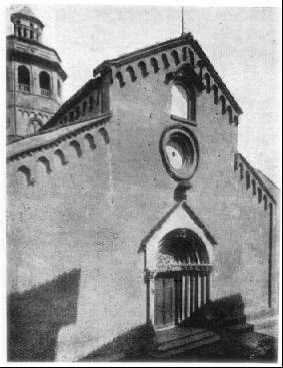  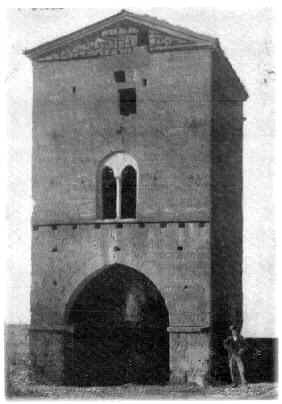
The
sandstone facade of the
Church
of the Patron of Gavi Saint James
(is one of
the best preserved medieval
monuments of Piedmont).
The bell tower is of the
eighteenth-century, octagonal.
The Portino,
the only survivor of the four
gates of the city.
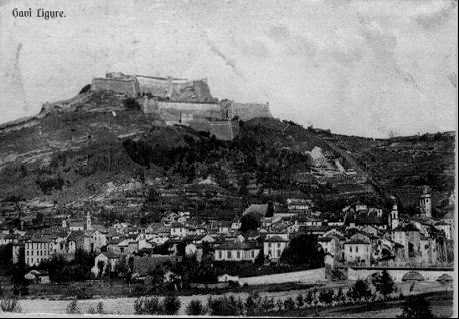
The Fort
in all its majesty.
Its grandeur dominates
Gavi as
a mighty
sentinel that
protects and
reassures it.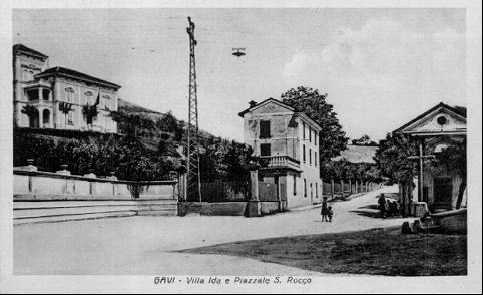
Piazza San
Rocco. the east entrance of
Gavi.
On
the left Villa Gavina.
To help you understand: where
there is the light pole,
today there is the
PasticceriaBar
Traverso.
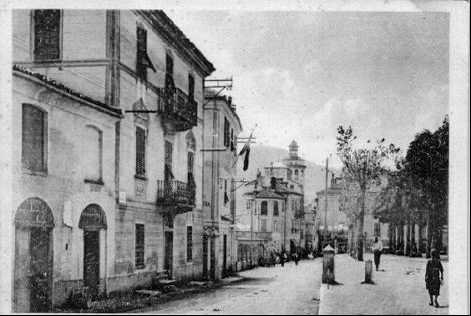
Via Roma
and Via
Goffredo Mameli
arriving from east, on the
right Piazza Dante

Piazza
Roma and the
building of primary schools
Leopoldo Gaetano
Romano.
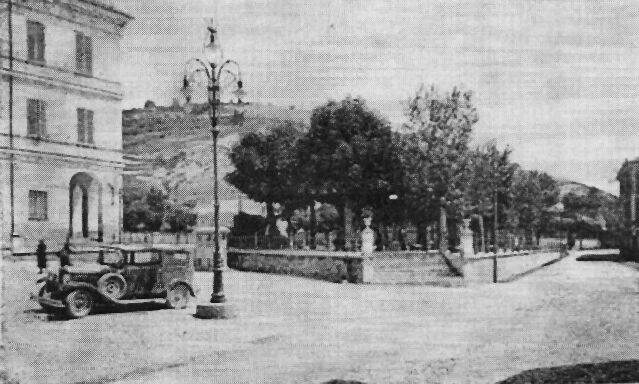
Piazza Roma and Via
Roma.
Observe the
background behind the square,
there are
not
houses jet.

Gavi
border on the bank of
the Lemme, front
barrier to continuation of
the
city
walls that went up to
the Fort. (You can see
part of the wall between
the two church towers)

Shrine of
Our Lady of the Guard
and the
hamlet
Nebbioli with the old "osteria".
 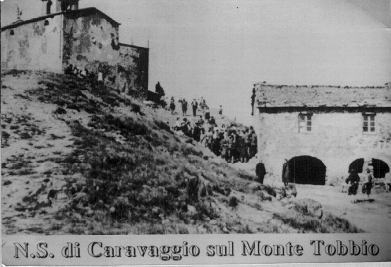
Sanctuary
of N.S.della
Guardia in Gavi and
N.S.di Caravaggio on Mount
Tobbio.
|
Parte 2/2
The history of Gavi is tied for the most of its history to the wonderful
Republic of Genoa, at which the gaviesi, are kept constantly united and
intimately close affinity to nature, homogeneity of habits, customs and
language (dialect).
Remember that Gavi is still under the Diocese of Genoa.
* * *
Of great historical and architectural interest is the old Parish Church
of San Giacomo, that preserves the Romanesque building (XIV sec.) Two
portals, and in the interior (transformed in the sixteenth century.),
valuable paintings by Genoese masters and a Madonna of Gandolfino
D'Asti, and
frescoes five and seventeenth-century in the oratory of Sts.
Philip and James.
* * *
An ancient legend says that a French princess named Gavina on the run
from his father who did not gave she in marriage to her sweetheart, did
build on Monte Moro, in the right bank of the river Lemme a manor house
where she lived, founding the city of Gavi
, closed and protected by a high wall.
The fortress with the current strong (382msl), is precisely derived from an
ancient castle of the twelfth century.
The old castle was transformed into a fortress on project of Fiorenzuola
between 1626-1630, built by the Genoese, with its galleries and complex
buildings. Was lately also used as penitentiary 1885-1907.
Currently, the fortress shows a star-shaped with six bastions developing
an acute angle, united by the curtain wall.
* * *
Of great importance is the old part of the town with old houses,
medieval ruins and the door towered called The Portino, the only remains
of four, that gave access to the city walls.
The material used for its construction is typical of the Romanesque period,
the local sandstone cut and square located in the oldest buildings in
Gavi.
. * * *
Very interesting are the three "oratori" born as a venue for three
brotherhoods: the Turchini, the Whites and the Reds, built between the
fifteenth and seventeenth century.
All retain valuable sculptures, frescoes and decorations from XVII and XVIII
century.
The particularity 'of the "oratori" are "I Christi", large crucifixes
richly decorated with wooden sculptures.
Suggestive processions, with members of the brotherhoods in their old
garments. "I Cristi" are held precariously in balance by one man caring
it with dance steps, the stops and the change of the bearer is very
spectacular given the amount of the Crucifix
.
* * *
Of interest are the Roman remains of the amphitheater and the ancient
home of duty Libarna. The Shrine of Our Madonna of the Guard (anno1575
up a hill 403msl), some ancient villas and a large number of
well-preserved medieval castles on the summits of countries
neighbors.
Suggestive, but should be done with the necessary precautions, it is the
ascent to Monte Tobbio (1,172 msl).
From
the summit besides the visit to the Church of Our Madonna of
Caravaggio, in the beautiful summer days, you can sweep from the sea of
Genoa to the Po Valley and the Alps and have a better understanding of
the strategic position of Gavi and Vallemme.
|

